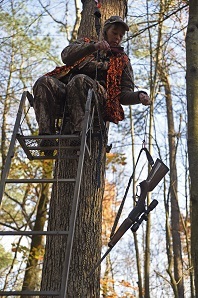Hunting and Trapping Newsletter
The New York State Department of Environmental Conservation sent this bulletin on 11/07/2023 02:00 PM EST |
| DEC Delivers - Information to keep you connected and informed from the NYS Department of Environmental Conservation |
| View in browser |
Hunting and Trapping Newsletter |
Leftover DMPs Will be Available Soon!
Attention all deer hunters! Remember that leftover Deer Management Permits (DMPs), or antlerless deer tags, become available for certain Wildlife Management Units (WMUs) beginning November 1st. This year, leftover DMPs are available for the following WMUs: 1C, 3M, 3R, 3S, 4J, 4T, 6G, 6P, 7F, 7H, 7J, 7R, 8A, 8C, 8F, 8G, 8H, 8J, 8M, 8N, 8R, 8S, 9A, 9F, & 9G You can apply for and receive up to two additional leftover DMPs through your local hunting license issuing outlet. DEC will not accept applications over the phone, by mail, or online. Leftover DMPs are issued on a first-come / first-serve basis. If you apply for leftover DMPs it will not affect your preference points. DEC adjusts the number of DMPs available to hunters in each wildlife management unit to ensure deer populations remain in balance with available habitat and do not exceed levels of public acceptance that can lead to increased crop damage, deer-vehicle collisions, and other deer-related impacts. Do your part to steward New York’s deer herd by filling at least one DMP this season. Winter is Coming - What are Bears Up to?Late in the fall months, bears are in the final stretch of hyperphagia or excessive eating, to ensure they have enough fat stored for the fast-approaching winter months. Some bears will search for food up to 20 hours a day! In years where food sources are less abundant bears have been known to den-up as early as late October. During especially mild winters, bears may not formally den and will remain active throughout the winter if food sources like acorns or beechnuts are available. Typically bears will begin denning starting in November and through December. Bear dens can be as simple as a depression on the forest floor, but typically are small cavities in trees or under brush piles. In New York, bears have been known to den under residential porches or other outbuildings. Den sites are typically dry and afford protection from the elements during the long winter season. Treestand Tale of Two Hunters
Two deer hunters climbed into their tree stands this fall. One of the hunters was wearing a full-body harness and had a tether strap that attached their harness to the tree. While adjusting their position, this hunter slipped and fell out of the stand. The harness and strap held, and this hunter suffered only minor injuries. The proper use of a full-body harness and staying connected to the tree at all times likely prevented major injuries or death. The second hunter was also wearing a full-body harness but was not attached to a lifeline while climbing into their stand. This hunter slipped on metal steps while ascending and fell 15 feet to the ground. This hunter is lucky to be alive but suffered major injuries including broken and fractured bones. Moral of the story: Wear and properly use a fall-arrest system (FAS). A FAS will keep you attached to the tree from the time you leave the ground until you get back down. A harness alone does not protect you if it isn’t attached the tree the entire time you are off the ground. Let someone know where your stand is located and when you plan to be home. Use a haul line to raise your unloaded gun, cocked crossbow, or bow with quiver up to the stand. Never tie the haul line to the trigger guard. Carry emergency equipment, such as a knife, cell phone, flashlight, and whistle in your pockets at all times (not in your pack hanging in the tree). |


